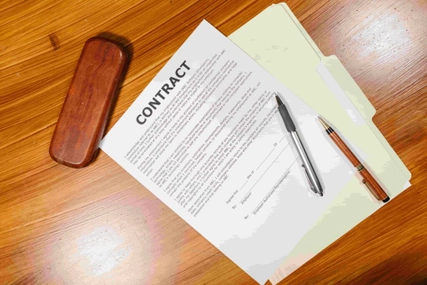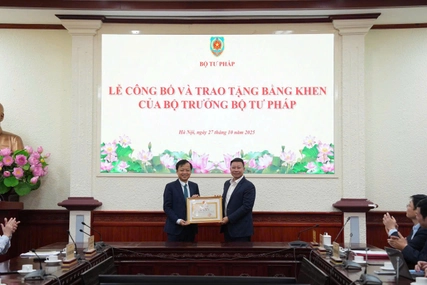After a number of years of commercializing the branded products, many trademark owners wish to refresh the look of their brands by modifying certain elements to make the mark more noticeable and approachable to the general public. Most of them believe that because they have registered a trademark, they are free to use it in whatever way they choose. This simplistic way of thinking results from a neglect for or insufficient understanding of the intellectual property requirements, which cost the trademark owner a hefty price.
- Typical trademark disputes caused by improper trademark use
- Risks due to improper use of registered trademarks
- Using a mark in a form different from the one in which it was registered - Risk of infringing on another's trademark
- Using a mark in a form different to the one in which it was registered - Risk of losing trademark rights
- Using a mark in a form different to the one in which it was registered - Risk of losing trademark rights
- What is the proper use of trademarks?
- Is it mandatory to use the mark exactly as registered?
- Change the layout/color or stylization of the registered trademark
- Adding new elements to registered trademarks
- Removing/Omitting part of a registered trademark
- What strategy to reduce the risk of using a trademark other than the registered trademark?
- The bottom line
Typical trademark disputes caused by improper trademark use
(#1) ASANZO vs. ASANO
Recently, the People's Court of Ho Chi Minh City has heard the trademark dispute between the plaintiff, Dong Phuong Trading and Manufacturing Co., Ltd and the defendant, Asanzo Vietnam Electronics Joint Stock Company. The plaintiff sued the defendant on the grounds that the defendant's use of the sign "ASANZO, device" violated the plaintiff's trademark "ASANO, device". Rejecting the plaintiff's claim of infringement, the defendant stated that the defendant's use of the trademark "ASANZO, device" is legal because Vietnam IPO has granted registration for the trademark "ASANZO". The relevant trademark images are provided in the below table.
Although the defendant's trademark "ASANZO" was protected, the first instance court determined that the defendant's use of the sign "ASANZO, device" constituted an infringement of the plaintiff's protected mark, compelling the defendant to cease the infringement, publicly apologize and rectify, and pay VND 100,000,000.
(#2) ENAT 400 vs. E-NAT Plus
In a similar case, Mega Lifescience, a Thai pharmaceutical company, requested a Vietnamese Enforcement Agency to handle trademark infringement against Hiep Thuan Thanh Pharmaceutical Co., Ltd. under administrative proceedings. Below are the relevant trademark images.
Taking the case into account, the Vietnamese Enforcement Agency determined that, while Hiep Thuan Thanh Company's trademark "E-NATPLUS" has been protected, this company's use of the mark "E-NAT Plus" for pharmaceutical products in Class 05 constitutes an infringement of Mega Lifescience's trademark "ENAT 400". Accordingly, the Vietnamese Enforcement Agency seized more than 700 boxes of the product "E-NAT Plus" during a raid at a pharmacy in Hapulico, which is considered Hanoi's drug market.
(#3) HAICNEAL vs. DIACNEAL
Dihon Pharmaceutical applied to register the mark "HAICNEAL" for pharmaceutical products in Class 05 in 2003. This trademark was later refused protection by Vietnam IPO because it was deemed confusingly similar to the cited mark "DIACNEAL" for cosmetic products in Class 03 and pharmaceuticals in Class 05 which is protected under IR No. 462008. The following table contains information about trademarks:
In order to overcome the cited mark, Dihon Pharmaceutical filed a cancellation action with Vietnam IPO against IR No. 462008 ("DIACNEAL") on the grounds that the mark "DIACNEAL" for pharmaceutical products has not been used in Vietnam for 05 consecutive years. In response to Dihon Pharmaceutical’s non-use cancellation action, the trademark owner, PIERRE FABRE DERMO-COSMETIQUE, provided documents proving the registration of an acne cream product with the Ministry of Health of Vietnam and a sample of the product sold on the Vietnamese market, to establish the mark's use. The trademark owner contended that records filed with the Vietnamese Ministry of Health and samples of the acne cream product established that the mark “DIACNEAL” was used for the pharmaceutical products in Class 05. After over 5 years of review, Vietnam IPO issued a decision in 2010 canceling the validity of IR No. 462008 ("DIACNEAL") for goods in Class 05. Under the cancellation decision, Vietnam IPO concluded in the cancellation decision that the documents and evidence submitted by PIERRE FABRE DERMO-COSMETIQUE demonstrating that the product bearing the mark "DIACNEAL" was used for the product "acne cream" were insufficient to establish that the trademark "DIACNEAL" was used for "pharmaceuticals" in Class 05, as the product "acne cream" is considered a cosmetic product.
Risks due to improper use of registered trademarks
Using a mark in a form different from the one in which it was registered - Risk of infringing on another's trademark
The use of a mark means the act of affixing a mark to goods or means of service in order to assist consumers in distinguishing goods/services of the same type produced/produced by different entities. Thus, the mark's primary role must be to identify/distinguish the commercial origin of the goods/services bearing the mark.
After being granted registration, the owner has the right to "affix" the mark to the goods/services registered under that mark to conduct commercial activities in Vietnam.
The defendants in all three of the preceding cases have registered their marks in Vietnam. Thus, from a legal standpoint, these defendants have the right to use their registered marks to commercialize their products in Vietnam.
However, the use of the mark must be within (or fall into) the scope/extent of the trademark protection. The scope of protection of a trademark registration depends on
- The mark image as registered and
- The list of goods/services identified in the trademark registration certificate.
This means that the mark’s use must not exceed the scope of protection afforded to it by law; therefore, even if the mark is registered, misuse of the mark may make the mark go beyond the scope of legal protection.
It would be wrong to think that, as long as the trademark is registered in Vietnam, you are free to use it in whatever way you want. Vietnamese law does not specifically provide that the owner must use the mark as it was registered. However, if the use of a trademark (even if registered) exceeds the extent/scope of its protection, exposing the relevant consumers to the risk of confusion, you may be exposed to many risks. It’s worth noting that, in addition to administrative sanctions (Enforcement agencies such as Market Management Bureau, Economic Police, Science and Technology Inspectors... may seize and destroy the infringing goods and impose monetary fines of up to VND 500,000,000), the right holder also can seek compensation for material and moral damage, apology, public correction via civil route. No one wants to bet (or to risk) a company's reputation or lose customer loyalty to a brand only due to improper trademark use.
Using a mark in a form different to the one in which it was registered - Risk of losing trademark rights
Improper use of a trademark can put you at risk of losing your trademark rights. A third party may petition the Vietnam IPO to cancel a registered trademark if such mark has not been used by the trademark owner or by the person authorized by the trademark owner for a period of 5 consecutive years from the date of registration. Using a trademark that is dissimilar to the registered one may mean that you have not used the registered trademark. Therefore, in this state, proof of use of the mark (as distinct from a registered mark) may be rejected by the Vietnam IPO, putting your registered trademark at high risk of being canceled for reasons of non-use.
Using a mark in a form different to the one in which it was registered - Risk of losing trademark rights
The trademark owner is obliged to use the mark for the registered goods/services. Use of a trademark for goods related/similar to the goods registered under the mark is not considered appropriate and admissible evidence to establish that the mark has been used on the registered goods (see case HAICNEAL vs. DIACNEAL).What is the proper use of trademarks?
Vietnamese law and practice do not have a clear definition of "proper use of trademarks". However, as a party to the Paris Convention, for the proper use of the mark, one can refer to Article 5.C.2 of the Convention, which provides for the use of the mark as follows:
"Use of a trademark by the proprietor in a form differing in elements which do not alter the distinctive character of the mark in the form in which it was registered in one of the countries of the Union shall not entail invalidation of the registration and shall not diminish the protection granted to the mark". Thus, in principle, the trademark owner can use a mark in different form, provided that such a mark does not "alter the distinctive character of the mark in the form in which it was registered ", it will not "entail invalidation of the registration and shall not diminish the protection granted to the mark".
In other words, using the mark in a manner other than that of the registered one still constitutes the use of the registered mark as long as the distinctive character of the mark is not altered.
The purpose of this legislation is to enable trademark owners to modify their marks without impairing their unique character, thereby adapting the mark to the marketing and promotion of connected goods or services.
However, the alteration must be in indistinguishable elements, and the sign(s) used in practice and the registered trademark must be fundamentally the same.
Is it mandatory to use the mark exactly as registered?
This question comes from the fact that when using trademarks in commerce in Vietnam, trademark owners tend to:
Change the design/color or stylization of the registered trademark;
Remove an element in the registered trademark;
Add some new elements to the registered trademark.
Many trademark owners think that the most critical aspect of their trademark is that it is registered. Therefore, making some changes to the mark will have no adverse effect or risk of infringing the mark of another organization/individual or causing the registered trademark to be invalidated. The truth is that this is not the case.
The four examples above illustrate the risks that trademark owners face when they use a mark that deviates from the registered trademark. However, does modify the mark for actual use or employing a sign in a form different from the registered one entail the same risks? The following examples illustrate how a trademark owner may utilize a mark on a form different from the registered one.
Change the layout/color or stylization of the registered trademark
Comment: In general, a trademark owner can make some changes in typeface, stylization, design, and color to a registered trademark without negatively affecting the validity or scope of protection of the mark if such changes do not alter the registered mark's distinctive character.
Adding new elements to registered trademarks
Comment: In general, several signs can be used simultaneously without changing the distinguishing characteristics of the registered sign. If the added element is not distinctive or has "weak" or unremarkable/dominant distinctiveness, it does not change the distinctive character of the registered trademark.
Removing/Omitting part of a registered trademark
Comment: If the element to be omitted is in a secondary position and is not distinctive, or the distinctiveness of such omitted element is "weak", then the omission of that element does not change the distinctive character of the mark.
What strategy to reduce the risk of using a trademark other than the registered trademark?
The law of Vietnam does not stipulate that the use of a sign that is similar/similar to a trademark registered by the owner himself will not infringe the trademark rights of other organizations/individuals. Therefore, this use cannot guarantee that the trademark owner is exempt from accusations of trademark infringement from other organizations/individuals.
Cases ASANZO vs. ASANO và ENAT 400 vs. E-NAT Plus demonstrate the risk of trademark infringement when the owner uses a mark in a form different from the one registered.
Thus, regardless of the registered trademark, using a trademark in a different version may expose the trademark owner to liability for trademark infringement by another organization/individual. A sign other than a registered trademark shall be considered as an independent sign, unrelated to the registered mark.
To determine whether an infringement of another's trademark has occurred, the Vietnamese enforcement agency only needs to determine that the following 3 conditions are satisfied:
- Similarity/identicalness of a sign to a protected trademark;
- Similarity/identicalness of the goods/services bearing the sign with those bearing the mark and
- Permission of use of the mark and likelihood of confusion on the commercial origin of the trademarked goods and services.
From the above cases, it can be seen that the trademark owner can still use a mark in a form different from the registered one under certain conditions. To avoid risks when you make some changes to a registered trademark, there are a few evaluation steps you should take:
STEP 1: Assessing registered trademarks: It is necessary to evaluate registered trademarks by considering which factors are distinguishable and have strong/dominant visual impressions.
STEP 2: Assessing the difference of the mark in practice and the impact of the changes: It is necessary to assess whether the factors contributing to the distinctive character of the registered mark are present and/or the modification in the mark in actual use, by directly comparing the two marks, in order to determine the degree of difference between them (major, significant or small/negligible difference).
In general, the assessments outlined above can assist you in determining whether you face a high or low risk of infringement when making changes to your registered trademark. To mitigate risk, we recommend the following approaches/strategies:
Should use the mark as registered;
- Must ensure that the distinctive characteristics of the registered mark are not altered if a mark in actual use is different from the registered one. Ideally, changes should be made only for insignificantly distinguishable elements;
Should apply to register the mark/s which its actual use is substantially different from the one previously registered;
- Should consider applying to register copyright at the Copyright Office of Vietnam if the conditions for copyright protection are met;
Should conduct availability searches for the marks in actual use different from the registered one in order to similar marks (if any);
- Should consider to attack validity of the similar marks found in the availability searches;
Should obtain an assessment conclusion on likelihood of trademark infringement at the Vietnam Intellectual Property Research Institute.
The bottom line
The above cases and the current provisions of Vietnam's intellectual property law cannot help determine or find a definite answer as to whether altering a registered mark may entail risks.
Obviously, when considering whether to make changes to a registered trademark, case-by-case facts must be considered before a hazard/risk assessment can be made.










